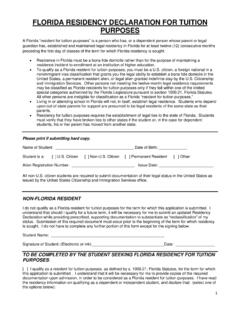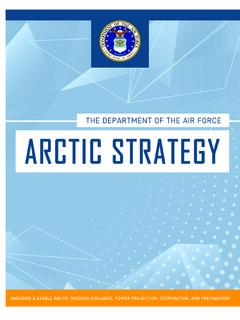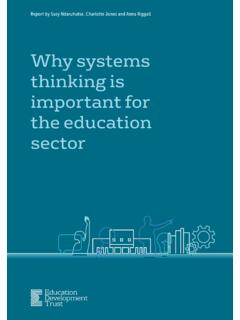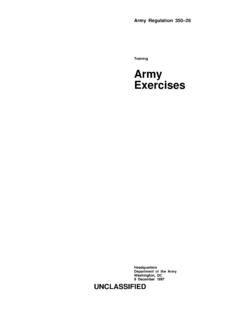Transcription of Political and Economic Liberalisation in Zambia 1991–2001
1 RAKNER I Page 1 Wednesday, October 1, 2003 2:17 PM. Political and Economic Liberalisation in Zambia 1991 2001. Lise Rakner The Nordic Africa Institute, 2003. RAKNER I Page 2 Wednesday, October 1, 2003 2:17 PM. Indexing terms Economic development Economic reform Donors Political development Zambia Cover photo: Gisela Geisler A rally for the Movement for Multiparty Democracy (MMD) before the 1991 transitional elections. Language checking: Elaine Alm n Index: Margaret Binns the author and Nordiska Afrikainstitutet, 2003. ISBN 91-7106-506-7. Printed in Sweden by Elanders Gotab, Stockholm 2003. RAKNER I Page 3 Wednesday, October 1, 2003 2:17 PM. Contents Acronyms .. 6. Acknowledgements .. 9. 1. REFORM FOR Political SURVIVAL: Political AND Economic . Liberalisation IN Zambia 1991 2001.
2 11. The Case of Zambia .. 11. Political Liberalisation 1991 2001.. 13. Economic Liberalisation 1991 2001 .. 14. The Expectations: The Dual Reform Perspective .. 15. The Argument: Zambia 's Dual Reform Experiences .. 15. The Decline of Interest Group Influence .. 16. The Increased Leverage of the MMD Government vis- -vis Its External Partners .. 17. Introduction of the Central Actors.. 18. The Domestic Policy Game between Government and Interest Groups .. 18. The External Policy Game between Government and Donors .. 21. The Sources of Analysis .. 24. Outline of the Analysis .. 24. 2. Political AND Economic Liberalisation IN THEORY. AND IN AFRICA .. 26. Interconnections between Political and Economic Liberalisation .. 26. The Argument for Authoritarianism .. 27. The Dual Reform Perspective.
3 28. Economic and Political Liberalisation in sub-Saharan Africa .. 31. The Partial Reform Syndrome in Africa .. 33. The Role of the International Donor Community in sub-Saharan African Reforms .. 35. Dual Conditionalities as a Response to Reform Failure .. 37. The Failure of Conditionality.. 39. Analysing Political and Economic Reforms in Zambia .. 41. 3. Political AND Economic DEVELOPMENTS IN Zambia . 1964 1991 .. 44. The Creation of a Developmentalist State Model.. 45. Business Interests .. 46. Agricultural Interests .. 48. Labour Interests .. 49. Political Consolidation: The One-Party State 1973 1991 .. 51. The Developmentalist Model in a Declining Economy .. 53. Economic Decline with No Response (1974 1983) .. 54. External Pressure for Reform Faces Internal Opposition (1983 1987).
4 56. Home-Grown Reform Hampered by the Magnitude of the Crisis (1987 1991) .. 61. Economic Crisis and the Birth of a Political Opposition Movement.. 62. The Economic Policies Adopted by the Opposition .. 64. RAKNER I Page 4 Wednesday, October 1, 2003 2:17 PM. 4. Economic REFORMS 1991 2001: THE RELATIONSHIP BETWEEN. THE GOVERNMENT AND DOMESTIC INTEREST GROUPS .. 67. Economic Reforms in the First Chiluba Administration (1991 1996) .. 67. Macro- Economic Stabilisation through Monetary and Fiscal Measures.. 68. Liberalisation of Imports, Trade and Exchange Rates .. 69. Institutional Reforms .. 70. Agricultural Liberalisation .. 71. Privatisation of State-Owned Industries .. 72. Economic Reforms 1996 2001 .. 73. Macro- Economic Stabilisation and Liberalisation 1996 2001 .. 74.
5 Agricultural Liberalisation 1996 2001 .. 75. The Privatisation of the Zambian Consolidated Copper Mines .. 77. Economic Reforms 1991 2001: Opportunities Lost .. 78. Consultations between Government and Interest Groups 1991 2001 .. 80. MMD's Honeymoon (1991 1993) .. 81. Political Consolidation (1994 2001) .. 85. Agricultural Liberalisation and Responses from Interest Groups .. 86. Business Responses to Trade Liberalisation and Privatisation .. 90. Privatisation and the Trade Union Movement .. 95. Economic Reforms and the Role of Interest Groups .. 99. 5. Political Liberalisation 1991 2001: THE DECLINE. OF INTEREST GROUP INFLUENCE .. 103. Political Developments 1991-2001 .. 103. The First Election Period (1991 1996) .. 104. Political Developments in the Second Chiluba Administration (1996 2001).
6 111. Political Liberalisation and the Decline of Interest Groups .. 117. Organisational Proliferation .. 117. Party Developments in the Third Republic.. 122. Executive Dominance and the Effects on Interest Articulation .. 128. The Pluralist Paradox .. 131. 6. AID FOR REFORM: THE RELATIONSHIP BETWEEN THE ZAMBIAN. GOVERNMENT AND THE INTERNATIONAL DONOR COMMUNITY .. 134. Political and Economic Conditionality 1991 2001.. 135. Economic Conditionality Exercised through the Consultative Group Meetings.. 139. Political Conditionality Exercised through the Consultative Group Meetings.. 148. Playing the External Game: The Leverage of the Zambian Government vis- -vis Its External Partners.. 154. Leverage in Economic Governance 1991 2001 .. 154. Leverage in Political Governance 1991 2001.
7 159. Ownership versus Conditionality .. 167. Conditionality and the Partial Reform Syndrome .. 168. 7. Political AND Economic Liberalisation IN Zambia . 1991 2001 .. 171. Political and Economic Reforms 1991 2001 .. 171. RAKNER I Page 5 Wednesday, October 1, 2003 2:17 PM. The Economic Reform Record and the MMD Government .. 171. MMD's Economic Reform Record 1991 2001 .. 173. Reform Implementation as Two-Level Games between Domestic and External Actors.. 174. The Domestic Policy Game and the Decline of Interest Group Influence .. 175. The External Game between Zambia and the Donors .. 180. Executive Dominance and the Sustainability of Patronage Politics.. 184. Neo-Patrimonialism The Defining Feature of African Politics? .. 185. Do Institutions Matter? .. 187. Institutionalisation of Reforms.
8 188. Appendix 1: Informant Interviews .. 190. Appendix 2: Chronology of Major Political Developments 1991 2001.. 195. Appendix 3: Chronology of Major Economic Developments 1991 2001 .. 202. Bibliography .. 208. Index .. 229. RAKNER I Page 6 Wednesday, October 1, 2003 2:17 PM. Acronyms Afronet The Inter-African Network for Human Rights and development AAC Anglo-American Corporation ACC Anti-Corruption Commission ACMP Agricultural Credit Management Programme ANC African National Congress ASIP Agricultural Sector Investment Programme AZ Agenda for Zambia BoP Balance of Payment BOZ Bank of Zambia CCC Committee for a Clean Campaign CDC Commonwealth development Corporation CFB Commercial Farmers Bureau CG Consultative Group COMESA Common Market for Eastern and Southern Africa CSO Central Statistical Office CSPR Civil Society for Poverty Reduction CSUZ Civil Servants Union of Zambia DA(s) District Administrator(s).
9 DAC development Assistance Committee of OECD. DFID Department of International development DP Democratic Party EAZ Economic Association of Zambia ECZ Electoral Commission of Zambia EIU Economist Intelligence Unit ERC Economic Reform Credit ERIP Economic Recovery and Investment Project ESAC Economic and Social Adjustment Credit ESAF Enhanced Structural Adjustment Facility EU European Union EUEU European Union Electoral Unit FAO Food and Agricultural Organisation FDD Forum for development and Democracy FFTU Federation of Free Trade Unions FINDECO Financial and development Corporation FODEP Foundation for a Democratic Process FRA Food Reserve agency GDP Gross Domestic Product GNP Gross National Product GRZ Government of the Republic of Zambia HIPC Heavily Indebted Poor Countries HP Heritage Party IBRD
10 International Bank for Reconstruction and development IDA International development Association IDEA International Institute for Democracy and Electoral Assistance IFIs International Finance Institutions ILO International Labour Organisation's IMF International Monetary Fund INDECO Industrial development Corporation INESOR Institute for Social and Economic Research, University of Zambia IR Industrial Relations Act JCTR Jesuit Centre for Theological Reflection KCM Konkola Copper Mines KDMP Konkola Deep Mining Project LPF Liberal Progressive Front LUSE Lusaka Stock Exchange MAFF Ministry of Agriculture, Food and Fisheries MDP Movement for Democratic Process 6. RAKNER I Page 7 Wednesday, October 1, 2003 2:17 PM. MINDECO Mining development Corporation MMD Movement for Multiparty Democracy MOF Ministry of Finance and Economic development MUZ Mine Workers Union of Zambia NADA National Democratic Alliance NAMBOARD National Marketing Board NASSPFU National Association of Small-Scale and Peasant Farmers Union of Zambia NCC National Christian Coalition NDP National Democratic Party NGO(s) Non-Governmental Orgnaisation(s).









